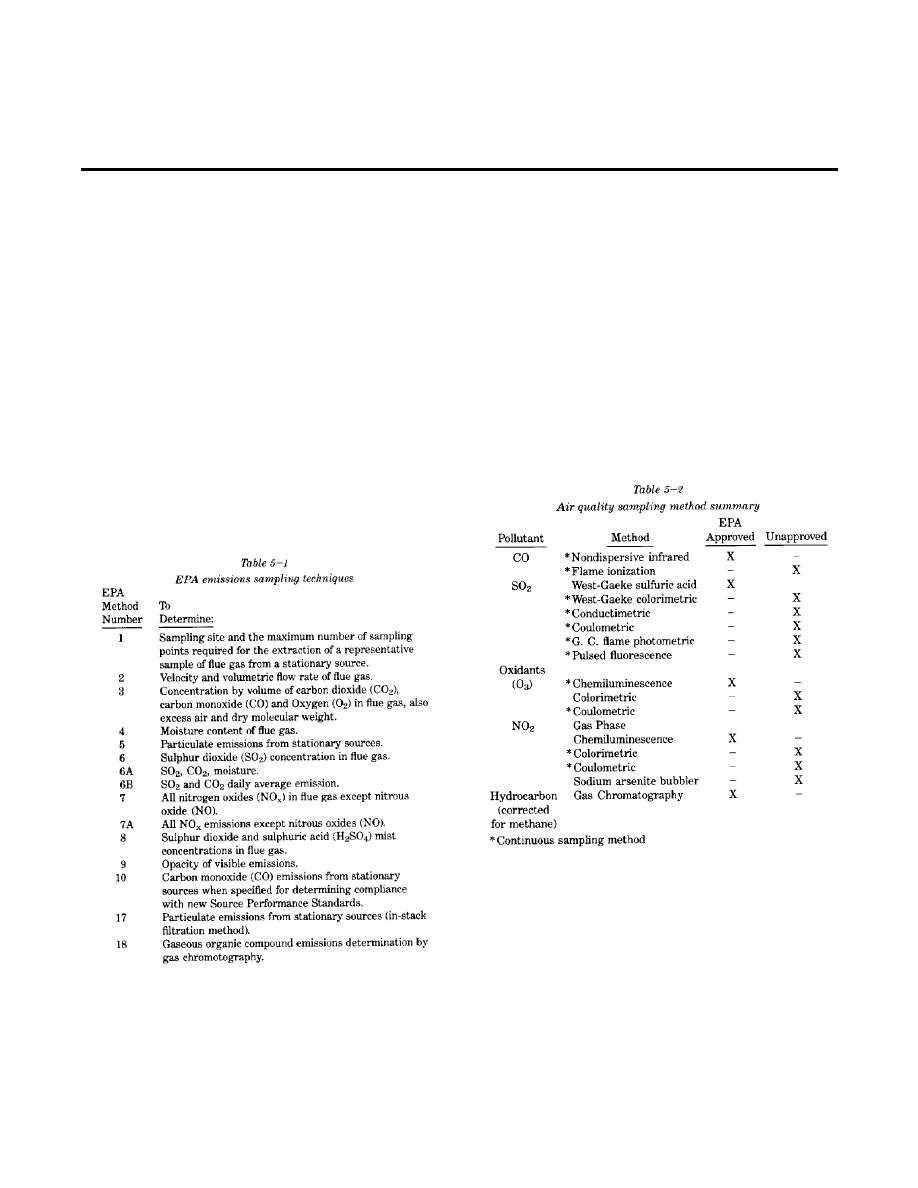
TM 5-815-1/AFR 19-6
CHAPTER 5
MEASURING TECHNIQUES
5-1.
Criteria
standards. For the determination of possible violations
of air quality, the continuous monitoring of pollutant
In order to evaluate the nature and magnitude of air
concentrations is normally required for a one-year
pollution, establish remedial measures, and determine
period. Air quality measurements are a function of the
control programs, it is necessary to test for the exist-
sampling site, the local meteorology, the methods used,
ence of pollutants. In the upgrading of existing installa-
and the existing pollutant concentration in the
tions, compliance is determined through "point source
atmosphere. Personnel knowledgeable and experienced
emission rate tests." Revisions to the regulations
in meteorology and air quality testing are needed to
regarding air pollution test requirements for federal
conduct and evaluate air-quality measurements.
installations appear in the Federal Register.
b. Sampling technique. The criteria for instrumen-
tation, calibration, and use of EPA-approved sampling
5-2.
Stack and source measurement tech-
techniques are covered under 40 CFR 53
niques
Environmental Protection Agency Regulations on
The point source emission rate test methods and
Ambient Air Monitoring Reference and Equivalent
requirements are covered under Environmental Pro-
Methods. See table 5-2.
tection Agency Regulations on Standards of Perform-
ance for New Stationary Sources, 40 CFR 60 and
subsequent revisions. The techniques are listed in table
5-1.
(1)
Continuous sampling is the recommended
technique for obtaining the most reliable
information concerning the variation of
pollutant concentration in the real
atmosphere. Discrete sampling can be used
for plume tracking and random checking.
Discrete sampling should be used with
caution, however, when measuring any of
5-3.
Meteorological and ambient air mea-
several pollutants that have daily variations.
surement
(For example, ozone has very low con-
a. Measurements. Air quality measurements are
centrations at night.) In addition, use of
used to trace emission sources and determine if these
discrete sampling methods will often result
sources comply with federal, state, and local air quality
5-1



 Previous Page
Previous Page
